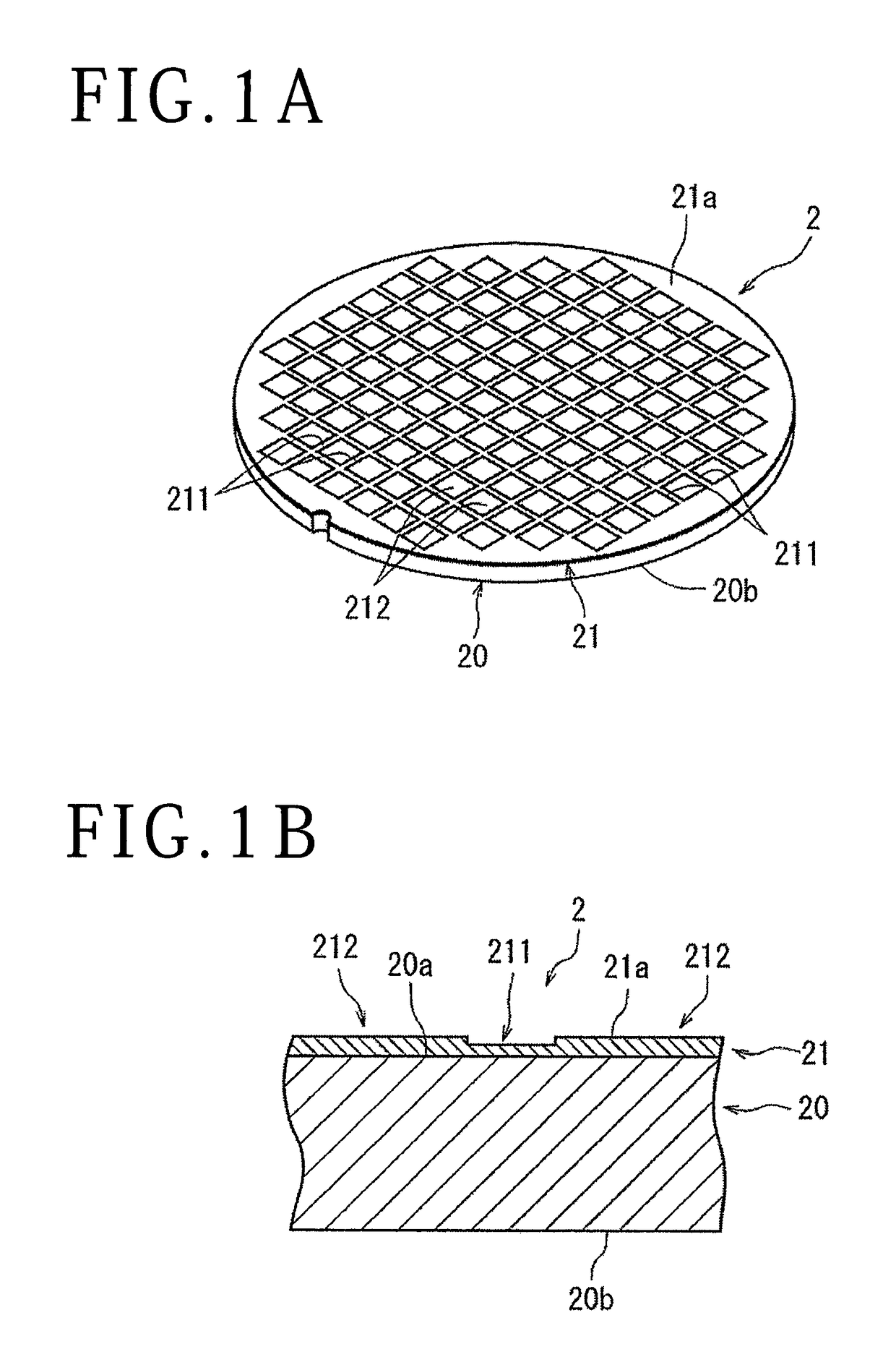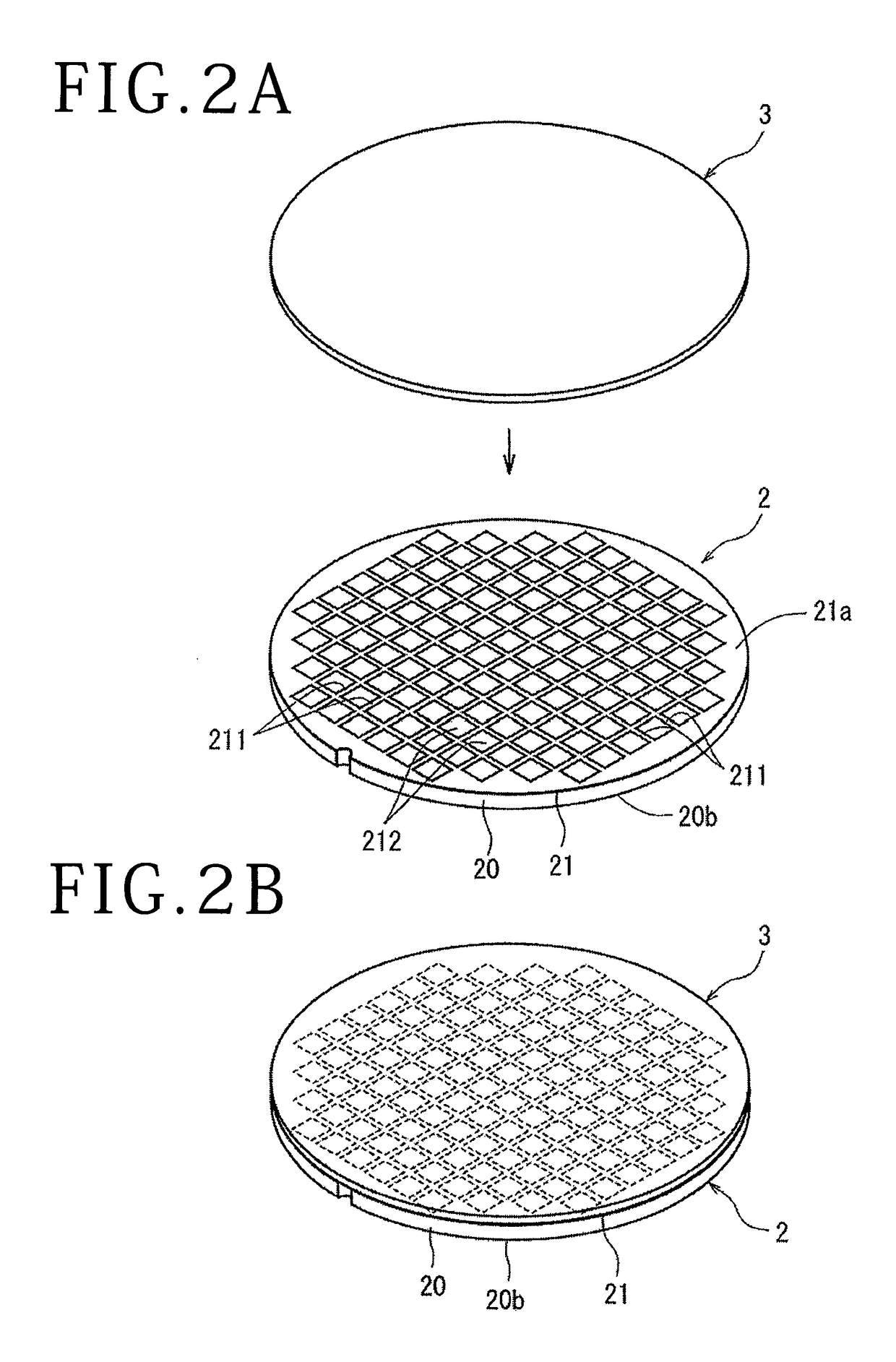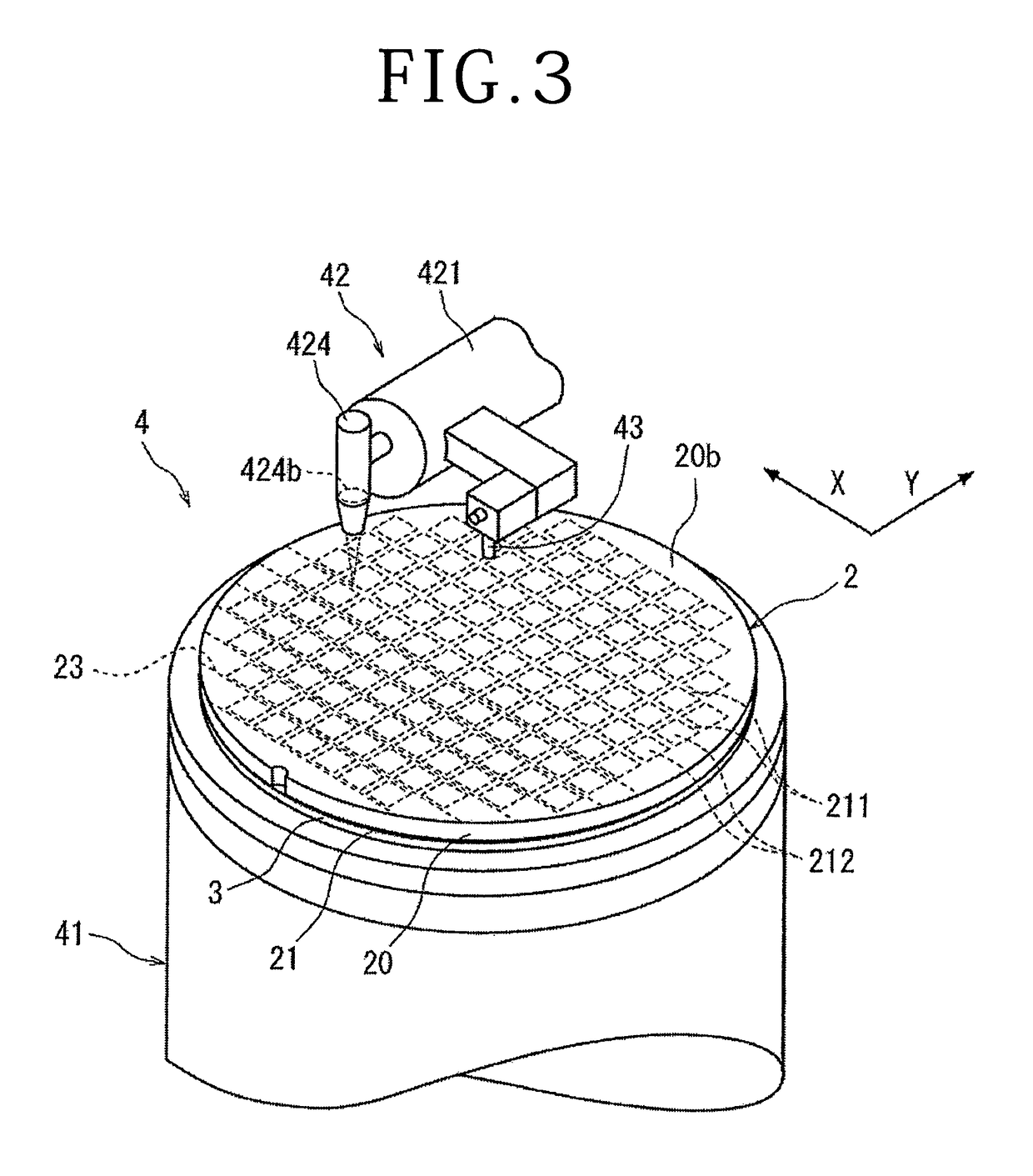Method of processing single-crystal substrate
a technology of single crystals and substrates, applied in the field of single crystal substrate processing, can solve problems such as poor productivity
- Summary
- Abstract
- Description
- Claims
- Application Information
AI Technical Summary
Benefits of technology
Problems solved by technology
Method used
Image
Examples
experiment 1
[Experiment 1]
[0043]Condition 1 . . . single-crystal substrate: sapphire substrate (having a thickness of 400 μm)
[0044]Condition 2 . . . the wavelength of the pulsed laser beam is set to 1030 nm
[0045]Condition 3 . . . the repetitive frequency of the pulsed laser beam is set to 100 kHz
[0046]Condition 4 . . . the spot diameter of the pulsed laser beam is set to 10 μm
[0047]Condition 5 . . . the average output power of the pulsed laser beam is set to 5 W
[0048]Condition 6 . . . variable: the pulse width of the pulsed laser beam
[0049]The pulsed laser beam was applied to the sapphire substrate while the pulse width was varied from 0.1 ps to 100 ps under the above conditions, and the processed state was observed.
[0050]When the pulse width ranged from 0.1 ps to 0.6 ps, voids were formed within the sapphire substrate.
[0051]When the pulse width ranged from 0.7 ps to 63 ps, shield tunnels including fine holes and amorphous regions shielding the fine holes were formed within the sapphire substra...
experiment 2
[Experiment 2]
[0055]Condition 1 . . . single-crystal substrate: sapphire substrate (having a thickness of 400 μm)
[0056]Condition 2 . . . the wavelength of the pulsed laser beam is set to 1030 nm
[0057]Condition 3 . . . the pulse width is set to 10 ps
[0058]Condition 4 . . . the spot diameter of the pulsed laser beam is set to 10 μm
[0059]Condition 5 . . . the average output power of the pulsed laser beam is set to 5 W
[0060]Condition 6 . . . variable: the repetitive frequency of the pulsed laser beam
[0061]The pulsed laser beam was applied to the sapphire substrate while the repetitive frequency was varied from 1 kHz to 1000 kHz under the above conditions, and the processed state was observed.
[0062]When the repetitive frequency ranged from 1 kHz to 6 kHz, the inside of the sapphire substrate was broken and cracks were radially developed therein.
[0063]When the repetitive frequency ranged from 7 kHz to 640 kHz, shield tunnels including fine holes and amorphous regions shielding the fine ho...
PUM
| Property | Measurement | Unit |
|---|---|---|
| thickness | aaaaa | aaaaa |
| thickness | aaaaa | aaaaa |
| thickness | aaaaa | aaaaa |
Abstract
Description
Claims
Application Information
 Login to View More
Login to View More - R&D
- Intellectual Property
- Life Sciences
- Materials
- Tech Scout
- Unparalleled Data Quality
- Higher Quality Content
- 60% Fewer Hallucinations
Browse by: Latest US Patents, China's latest patents, Technical Efficacy Thesaurus, Application Domain, Technology Topic, Popular Technical Reports.
© 2025 PatSnap. All rights reserved.Legal|Privacy policy|Modern Slavery Act Transparency Statement|Sitemap|About US| Contact US: help@patsnap.com



